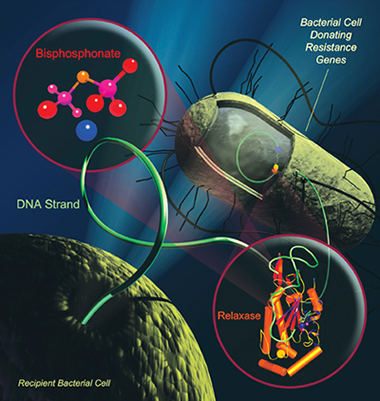Medical products, packaging materials and foodstuffs can be safely and effectively sterilized using electron beams. In the future, researchers plan to use accelerated electrons to destroy bacteria from implanted tissues as well as to change the properties of organic materials.

[Translation by Dr. Nachmani Moshe]
Medical products, packaging materials and foodstuffs can be safely and effectively sterilized using electron beams. In the future, researchers plan to use accelerated electrons to destroy bacteria from implanted tissues as well as to change the properties of organic materials.
It is essential that medical tubes, disposable syringes, dialysis equipment as well as medication packaging materials be completely free of bacteria. A well-known procedure for destroying bacteria, viruses, fungi, spores, etc. is sterilization using electron beams. In this method, accelerated and high-energy electrons penetrate into the material. Researchers from the University of Dresden were able to use this method to remove harmful organisms from seeds; The method lasts for a few milliseconds and allows fatal damage to the DNA of those pests, the result of which is preventing their ability to reproduce. Now, the researchers are turning their focus to new areas of application: they are testing the feasibility of the technology for the use of a non-thermal electron beam in order to sterilize and modify organic tissues, a method that could give rise to completely new medical treatment options.
"Under conditions of atmospheric pressure and at temperatures below forty degrees Celsius, we treat tissue samples using accelerated electrons to the point where they penetrate into the material. This method is known as a low-energy electron beam process," explains the lead researcher. The non-destructive method offers clear advantages - since the depth of penetration can be adjusted so that only the outer surface is sterilized, the tissue itself does not heat up and the cells inside remain unharmed. The method actually allows control of the depth of penetration and the intensity of the beam.
With the help of the accelerated electrons, the researchers are able to change the properties of materials and cause changes in the tissue. As part of their research, the scientists chose the pericardium of pigs as the basis for their biological model. This part is often used in biological heart valve prostheses, but implants of this type only survive for 15 years. The reason for this lies in the fact that in order to connect the tissues, a chemical substance is used that over the years causes the organic implant to become calcified. "Accelerated electrons are fascinating from this point of view because they are a good alternative thanks to their ability to break chemical bonds and even create crosslinking between parts of different molecules, such as tissue parts," explains the lead researcher. In their experiments, the researchers were indeed able to show how they cross-link collagen molecules, that is, connect protein chains. In order to check the development of the cells after sterilization with the help of the electron beam, the researchers grew cells on different samples. Only a small number of cells grew on tissue treated with the usual chemical. However, on top of the culture that was modified with the help of the electron beam, a much more significant amount of cells grew and even succeeded in multiplying.
The researchers also performed successful experiments on vascular grafts using aorta tissue derived from the BAH. "The use of synthetic implants made of polymers designed to replace damaged blood vessels is an inevitable procedure in the treatment of patients with vascular problems. In view of the risk of thrombosis, the diameter is limited to six millimeters only. For blood vessels that are smaller in diameter, the only option is to use organic implants," explains the lead researcher. Their sterilization involves difficulties - the muscle cells and the endothelial cells in the inner layers of the blood vessels must not be damaged. Since the researchers are able to determine the optimal penetration depth of the electrons into the walls of the blood vessels and sterilize only the outer layer of the aorta, the cells are not damaged. The depth of penetration that the researchers determined as part of the experiments was 23 micrometers, which is the depth where the outermost connective layer of the tissue is located. "At a radiation intensity of 22 kGy, the function of the blood vessels is not affected. At the same time, the bacteria residing in the sample are destroyed within a few seconds," explains the researcher. The low energy of the electron beam allows for a compact design of the screening device. This characteristic, combined with high treatment speed, makes the method ideal for tissue banks or operating rooms. In the next step, the researchers plan to optimize the process and create a commercial sterilization device.
